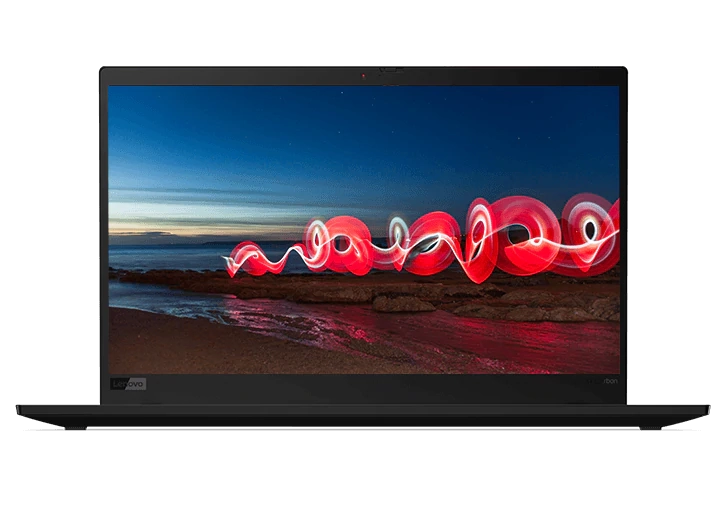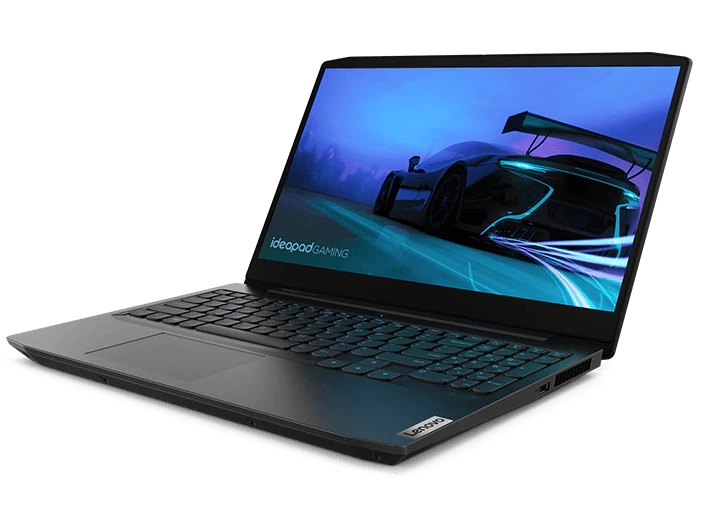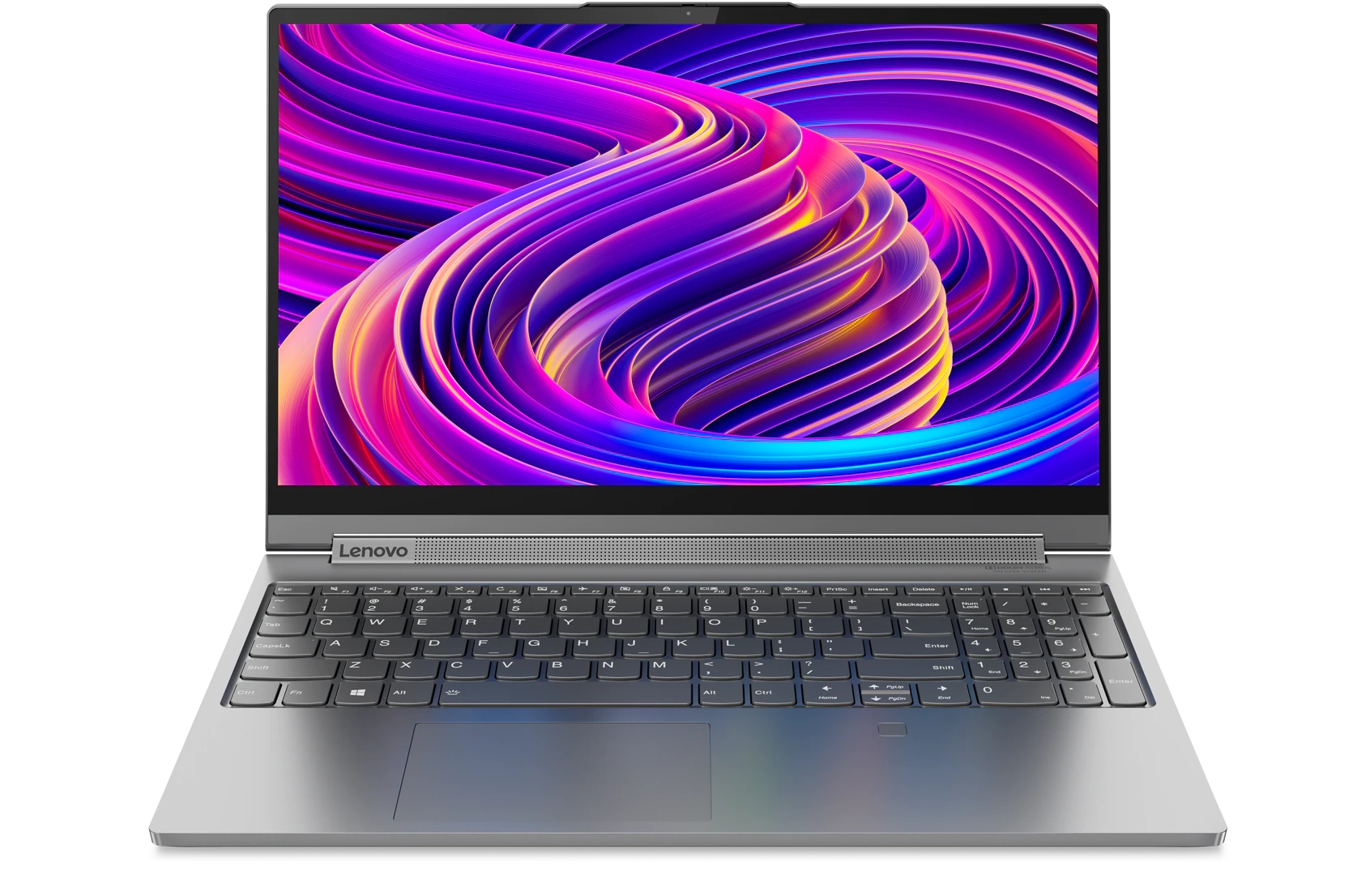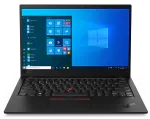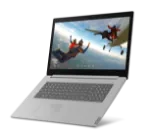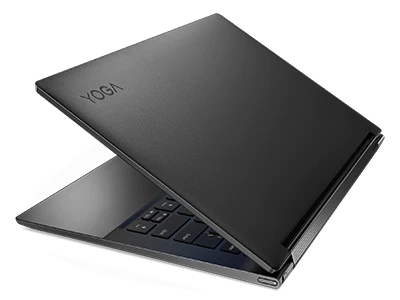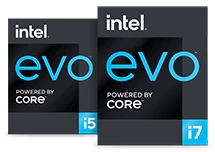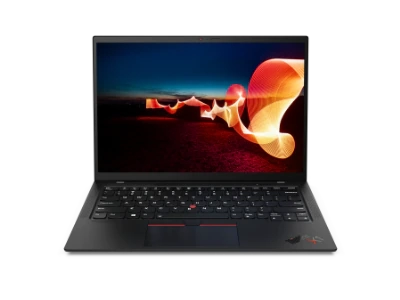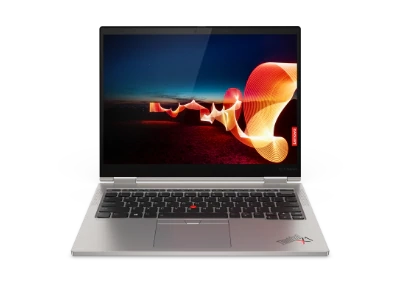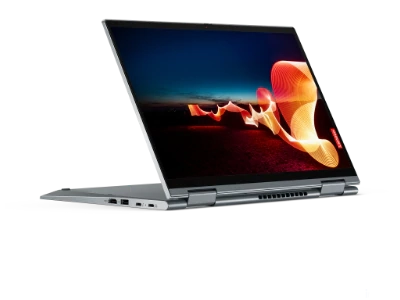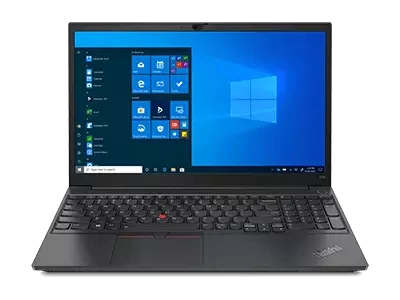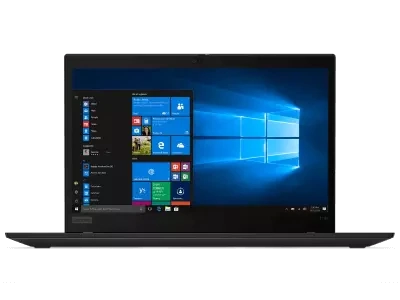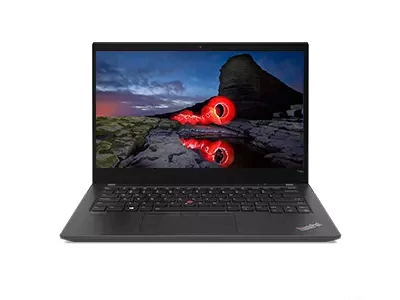Was ist ein Workstation-PC?
Es gibt viele verschiedene Vorstellungen davon, was ein Workstation computer ist. Diese Vorstellungen reichen von speziellen Computern für technische oder wissenschaftliche Anwendungen über einen PC oder ein Großrechnerterminal in einem lokalen Netz bis hin zu einem "dumb terminal", einem Terminal ohne Rechenleistung, das an einen Großrechner angeschlossen ist.
Lenovo Workstation-Computer wurden für ultimative Produktivität entwickelt und zeichnen sich durch eine verbesserte Leistung und branchenführende Zuverlässigkeit aus, die herkömmliche Desktop-Computer nicht bieten können. Durch die Kombination von Spitzenkomponenten mit erweiterter Unterstützung für intelligentere Technologien wie Client-KI und AR/VR sind Lenovo Workstations für Ihre anspruchsvollsten Projekte ausgelegt - damit Ihre Ideen Wirklichkeit werden.
Was ist die Aufgabe eines Arbeitsplatzes?
Für Benutzer von Workstation-Desktops gibt es zwei Möglichkeiten, die Produktivität bei Design und Entwicklung zu steigern:
- Verkürzen Sie die für die Erledigung einzelner Aufgaben benötigte Zeit und verbessern Sie den Arbeitsablauf insgesamt. Dies erfordert den bestmöglichen Durchsatz für eine Reihe von CAD-Arbeitslasten
- Vermeiden Sie Leerlaufzeiten, indem Sie sicherstellen, dass alle kritischen IT-Ressourcen (Hardware und Software) stets betriebsbereit und für die Benutzer verfügbar sind. Dies erfordert die zuverlässigsten Computer-Tools.
Workstations sind speziell dafür ausgelegt, beides zu erreichen, und bieten Funktionen, die Standard-PCs nicht bieten können, wie z. B.:
- ISV-Zertifizierung
- Prozessoren (CPUs) von professionellem Format
- Grafikkarten (GPUs)
- Verbesserte Speicher- und Speicherkapazität und verbesserter Schutz
- Stärkere Netzteile (PSUs)
- Robusteres Gehäusedesign und robustere Materialien
- Umfassendere Garantien und Unterstützung.
Warum ist Zuverlässigkeit für Benutzer von Workstation-Desktops so wichtig?
Die auf Zuverlässigkeit ausgelegte Workstation ist grundsätzlich zuverlässiger als ihre auf Verbraucher oder Unternehmen ausgerichteten Geschwister, was sich sowohl in den Komponenten im Inneren als auch im Gehäuse, in dem sie untergebracht sind, zeigt:
- Eine umfassende Wärmetechnik des Gehäuses sorgt beispielsweise dafür, dass die Komponenten der Workstation unter dem Druck der rechenintensiven Software kühl bleiben, da heiße Teile anfälliger für Ausfälle sind.
- CPUs und GPUs auf Workstation-Niveau haben einen ähnlichen Fokus auf robustes Design:
- Workstation-GPU-Add-in-Karten verfügen beispielsweise über vergoldete PCI-Express-Finger, stärkere Haltemechanismen sowie robustere Taktung und Treiber.
- Intel® Xeon® Prozessoren bieten exklusive Funktionen wie Speicherfehlerschutz (in Form von fehlerkorrigierendem Code oder ECC) und optimale Taktfrequenzen, die die Leistung maximieren, ohne die Zuverlässigkeit zu beeinträchtigen.
- Workstations bieten auch Schutz für gespeicherte Daten und unterstützen RAID-Konfigurationen, die den Inhalt Ihrer Festplatte schützen und die Ausfallzeiten im Falle eines Ausfalls minimieren.
- Das vielleicht wichtigste Merkmal der Workstation ist ihr Unterscheidungsmerkmal: die ISV-Zertifizierung (Independent Software Vendor) durch Unternehmen wie Autodesk und Dassault Systèmes. Dies bedeutet, dass Hardware-OEMs und ISVs zusammenarbeiten, um das komplette Workstation-System - Hardware, Anwendungen und Treiber - zu überprüfen:
- Umfassende Regressionstests, die sicherstellen, dass auf jeder zertifizierten Workstation die gängigsten CAD-Anwendungen zuverlässig laufen.
- Robustere Hardware-Designs in Verbindung mit ISV-Zertifizierung, die zu einer höheren Betriebszeit führen, da die Wahrscheinlichkeit von Abstürzen, Bugs, Speicherfehlern und Reparaturen sinkt.
Warum ist die Leistung für Benutzer von Workstation-Desktops so wichtig?
Speziell für CAD entwickelte Workstations zeichnen sich durch Leistung, Zuverlässigkeit und Verwaltbarkeit aus, aber für viele Benutzer ist die Leistung das Entscheidende. Das Design einer Workstation und die Auswahl der Software- und Hardwarekomponenten machen sie nicht nur zuverlässiger als einen Allzweck-PC, sondern lassen sie auch schneller durch anspruchsvolle CAD-Arbeitslasten laufen:
- Workstation-Gehäuse neigen dazu:
- Größer sein
- Bieten Sie mehr Erweiterungssteckplätze für:
- Add-in-Karten
- Mehr Buchten für die Lagerung
- Stärkere Netzteile, um sie alle mit Strom zu versorgen.
- Die ISV-Zertifizierung erhöht nicht nur die Zuverlässigkeit, sondern gewährleistet auch die optimale Schnittstelle zwischen Anwendung und Treiber
- Intel Xeon CPUs sind besser für die Bewältigung großer CAD-Datensätze und moderner Multithread-Workloads gerüstet:
- Mehr CPU-Kerne besetzen
- Unterstützung größerer Caches
- Koppeln Sie zu größeren Speicherabdrücken
- Professionelle Grafikprozessoren bieten in der Regel mehr Grafikspeicher als Consumer-Karten, so dass immer größere CAD-Modelle beim Rendern nicht durch einen Mangel an lokalem Speicher blockiert werden. Weitere Vorteile von Workstation-GPUs sind:
- Optimierung für die spezifischen Arten von Grafikoperationen, die am häufigsten im CAD eingesetzt werden
- Treiber, die besser sind als die für Spiele oder allgemeine Grafikanwendungen optimierten
- Treiber, die für das Zeichnen von glatten 3D-Linien und schattierten Oberflächen optimiert sind, was bei CAD-Zeichnungen üblich ist, aber bei Spielen und anderen verbraucherorientierten Anwendungen praktisch nicht vorkommt.
- Hersteller von Workstations bieten heute in der Regel unterstützende Software-Tools zur Optimierung von Leistung und Zuverlässigkeit an. Der Lenovo Performance Tuner (LPT) verfügt über Standardwerte, die in den meisten Anwendungsfällen eine solide Leistung liefern. Gleichzeitig haben Benutzer und IT-Administratoren die Möglichkeit, die Zuweisung von Hardwareressourcen bis hin zu einer spezifischen Auswahl der Anwendungen, die auf den CPU-Kernen laufen, fein abzustimmen.
Woher wissen Sie, wann es an der Zeit ist, Ihre Workstation aufzurüsten?
Der richtige Zeitpunkt, um den alten Arbeitsplatz gegen ein neues Modell auszutauschen, hängt vom Benutzer, dem Arbeitsablauf und dem Budget ab. Aber ein effektiver Austauschzyklus muss sein:
- Erstens: lange genug, um eine angemessene Amortisation des laufenden Vermögens zu ermöglichen
- Und zweitens kurz genug, um sicherzustellen, dass die Produktivität nicht zu weit hinter der Kurve zurückbleibt.
In der Regel sollten Sie eine Aufrüstung Ihres Arbeitsplatzes nach 18 bis 36 Monaten in Betracht ziehen.
Letztendlich stellt eine neue Workstation die überzeugendste IT-Investition dar. Mit Designfunktionen, die speziell auf die Prioritäten von CAD-Profis ausgerichtet sind, kann eine Workstation leisten, was ein PC nicht kann:
- Bei der Entwicklung einer Workstation steht die Zuverlässigkeit im Vordergrund, während die auf CAD-Anwendungen und Arbeitslasten abgestimmte Leistung einen deutlichen Geschwindigkeitszuwachs im Vergleich zu einem typischen Hochleistungs-PC bietet.
- Die Testergebnisse zeigen einen überlegenen Durchsatz für Workstations - oft dramatisch - insbesondere bei 3D-orientierten CAD-Workloads
- Und bei wettbewerbsfähigen Anschaffungspreisen in Kombination mit überlegener Zuverlässigkeit und Verwaltung erweist sich die Workstation über die Lebensdauer der Anlage oft als die kostengünstigere Option.
Unternehmen sind auf eine leistungsstarke und zuverlässige IT angewiesen, um ihre Kunden termingerecht und entsprechend den Spezifikationen beliefern zu können. Sie können es sich nicht leisten, Zeit und Geld für eine neue Ressource zu verschwenden, die die Produktivität einschränkt oder deren Nutzungsdauer überschritten ist. Wie die Untersuchung seiner Funktionen und die Ergebnisse seiner Tests zeigen, ist ein moderner Arbeitsplatzrechner definitiv das bessere Werkzeug für Unternehmen, die einen effektiven, produktiven CAD-Workflow benötigen.
Mobile Workstation vs. Laptop: ein umfassender Vergleich
Vergleicht man die Eigenschaften einer mobilen Workstation mit denen eines Laptops, so wird schnell klar, dass diese beiden Geräte nicht annähernd gleich sind. Jedes hat seine eigenen Merkmale, von denen nicht alle für Sie die richtige Wahl sind. Werfen Sie einen Blick auf die nachstehende Aufschlüsselung, um sich ein Bild von den wichtigsten Unterschieden zwischen einem mobilen Workstation-Laptop und einem normalen Modell zu machen.
| Spezifikation | Mobile Workstation | Laptop |
| Prozessor | High-End-Prozessor | Mittelklasse-Prozessor |
| RAM | RAM mit hoher Speicherkapazität | Geringere RAM-Kapazität |
| Grafiken | Dedizierte Grafikkarte | Integrierte Grafikkarte |
| Lagerung | Mehrere Speicheroptionen | Einzelne Speicheroption |
| Gewicht | Schwerer - 5-7 lbs | Leichter - 3-5 lbs |
| Lebensdauer der Batterie | Kürzere - 4-6 Stunden | Länger - 8-10 Stunden |
| Preis | Höher | Unter |
| Anzeige | 17-Zoll+ | 13-Zoll+ |
| Häfen | Mehrere Ports | Weniger Häfen |
Gaming-Laptop vs. mobile Workstation
Beim Thema robuste Laptops fragen Sie sich vielleicht, was Spielecomputer damit zu tun haben. Beide sind zwar fortschrittlichere Versionen herkömmlicher Laptops, aber mobile Workstations sind speziell für Geschäftsprogramme konzipiert. Sie eignen sich besser für die gleichzeitige Ausführung mehrerer Anwendungen, während Spiele-Laptops oft mit besseren Grafikkarten ausgestattet sind. Eine Gemeinsamkeit ist jedoch, dass Gaming-Laptops und mobile Workstations gleich große Bildschirme haben, oft 17". Diese Größe ist ideal, unabhängig davon, für welche Anwendung Sie den Computer verwenden.
Beide Optionen können gut funktionieren, aber was ein Notebook zum "richtigen" Notebook für Sie macht, hängt davon ab, was Sie in Bezug auf Leistung, Funktionen und Mobilität suchen. Es empfiehlt sich, die einzelnen Produkte auf der Lenovo-Website zu durchsuchen, um sich einen Überblick über das Angebot zu verschaffen. Von dort aus wird es viel einfacher sein, das Verhältnis von Funktionen und Preisen zu beurteilen und eine fundierte Entscheidung zu treffen.
Mobile Workstation vs. Business-Laptop
Mobile Workstations sind fortschrittlicher als normale Business-Laptops, da sie bessere Grafikkarten, eine höhere RAM-Kapazität und eine größere Anzahl von Anschlüssen für die Verbindung mit mehreren Geräten bieten. Sie können sie für intensive Aufgaben wie Rendering, 3D-Animation, CAD oder Datenanalyse verwenden. Normale Business-Laptops hingegen sind für alltägliche Büroaufgaben wie Tabellenkalkulationen, Textverarbeitung und Präsentationssoftware konzipiert.
Preislich unterscheiden sich die beiden stark. Mobile Workstations sind in der Regel teurer als normale Business-Laptops, da sie mit leistungsfähigerer Hardware ausgestattet sind und speziell für anspruchsvolle Aufgaben konzipiert wurden. Business-Laptops können ebenfalls teuer sein, obwohl es sie auch zu Einstiegspreisen gibt. Man kann es am besten so ausdrücken: "Man bekommt, wofür man bezahlt" - mobile Workstations sind teurer als Business-Laptops, aber sie können es wert sein, wenn Sie Leistung brauchen.
Was sind die Vorteile von mobilen Workstations?
Der Vergleich zwischen mobilen Workstations und Laptops ist eine gute Möglichkeit, Ihre Kaufentscheidung einzugrenzen. Aber es sollte nicht die einzige Strategie sein, die Sie anwenden. Letzten Endes ist der Wert, den ein mobiler Computerarbeitsplatz für Sie als Einzelperson bietet, ausschlaggebend für den Kauf. Vergessen Sie, dass das eine besser ist als das andere - was wirklich zählt, ist die Frage, welche Vorteile sich daraus ergeben und wie sie Ihnen das Leben erleichtern können.
Zunächst einmal ist eine mobile Workstation so konzipiert, dass sie echte Leistung für den Einsatz unterwegs bietet. Im Gegensatz zu Laptops, die aufgrund ihres schlanken Formfaktors in der Regel nur begrenzt aufrüstbar sind, lassen sich mobile Workstations problemlos aufrüsten. Das bedeutet, dass Sie jahrelang Zugang zu den neuesten Hardware- und Softwaretechnologien haben, ohne Ihr Gerät komplett ersetzen zu müssen.
Wenn Sie eine mobile Workstation von Lenovo kaufen, werden Sie feststellen, dass diese Geräte auch mit leistungsstarken internen Komponenten ausgestattet werden können. Dadurch eignen sie sich hervorragend für Aufgaben wie Grafikdesign, Videobearbeitung und sogar Spiele - etwas, das bei herkömmlichen Laptops nur selten möglich ist, ohne extreme Abstriche bei der grafischen Leistung zu machen.
Wenn Sie diese Hardware mit der neuesten Software kombinieren, erhalten Sie ein Gerät, das nicht nur reibungslos funktioniert und leistungsstark genug ist, um jede Aufgabe zu bewältigen, sondern auch sicher und zuverlässig ist. Das ist in der heutigen Welt der Remote- und Hybrid-Arbeitsplätze wichtiger denn je. Mobile Workstations machen dies erst möglich.
Letztendlich hängt die richtige Wahl von Ihren individuellen Bedürfnissen ab. Diejenigen, die intensiver arbeiten, werden wahrscheinlich von einer mobilen Workstation profitieren, während alle anderen in der Regel mit einem Laptop auskommen können. Wenn Sie sich noch nicht sicher sind, für welche Option Sie sich entscheiden sollen, bietet Lenovo eine große Auswahl an beiden Typen an - so finden Sie das perfekte Gerät, ganz gleich, was Ihre Anforderungen sind. Starten Sie Ihren Einkauf noch heute!



Limits: Bestellungen sind auf 5 Computer pro Kunde beschränkt. Wenn Sie größere Stückzahlen bestellen möchten, gehen Sie zur Seite „So kaufen Sie“, um Informationen zu Resellern und Händlern von Lenovo Produkten zu erhalten.
Digital River Ireland Ltd ist der autorisierte Reseller und Händler für die in diesem Shop angebotenen Produkte und Dienstleistungen.
Angebote und Verfügbarkeit: Alle Angebote unterliegen der Verfügbarkeit. Änderungen von Angeboten, Preisen, technischen Daten und Verfügbarkeit sind ohne Vorankündigung vorbehalten. Falls ein Produkt nicht mehr verfügbar oder ein Preis- oder Tippfehler aufgetreten ist, nimmt Digital River Kontakt zu Ihnen auf und storniert Ihre Bestellung. Die auf dieser Website vorgestellten Produktangebote und Spezifikationen können jederzeit und ohne Ankündigung geändert oder aktualisiert werden. Die abgebildeten Modelle dienen nur zur Illustration. Lenovo ist für fehlerhafte Abbildungen oder Druckfehler nicht verantwortlich. Die hier gezeigten PCs werden mit Betriebssystem geliefert.
Preise: Webpreise verstehen sich inklusive MwSt. Preise und Angebote im Warenkorb können sich so lange ändern, bis die Bestellung aufgegeben wurde. Preisersparnisse beziehen sich auf die normalen Lenovo Webpreise. Händlerpreise können abweichen und über den hier beworbenen Preisen liegen.
Angaben sind zugleich repräsentatives Beispiel i. S. d. § 6a Abs. 4 PAngV. Die Vermittlung erfolgt ausschließlich für den Kreditgeber BNP Paribas S.A. Niederlassung Deutschland, Standort München: Schwanthalerstr. 31, 80336 München.
Akku: Akkus, die nicht von Lenovo hergestellt oder autorisiert wurden, können in den Systemen nicht verwendet werden. Systeme können gestartet werden, die unautorisierten Akkus werden jedoch nicht geladen. Lenovo übernimmt keine Verantwortung für die Sicherheit oder Leistungsfähigkeit nicht autorisierter Akkus und keine Haftung für Defekte oder Schäden, die durch deren Verwendung entstehen. Die Daten zur Akkulaufzeit basieren auf MobileMark® 2014 und stellen den geschätzten Maximalwert dar. Die tatsächliche Akkulaufzeit hängt von vielen Faktoren ab, u. a. von der Bildschirmhelligkeit, den aktiven Anwendungen, Leistungsmerkmalen, Energiemanagement-Einstellungen, dem Alter und Zustand des Akkus und anderen kundenspezifischen Parametern.
Allgemeine Bestimmungen: Lesen Sie wichtige Informationen von Microsoft®, die das von Ihnen erworbene System betreffen können, u. a. mit Details zu Windows 10, Windows 8, Windows 7 und möglichen Upgrades/Downgrades. Lenovo übernimmt keinerlei Verantwortung oder Garantie für Produkte oder Services von Drittherstellern.
Marken: Lenovo, ThinkPad, Ideapad, ThinkCentre, ThinkStation und das Lenovo Logo sind Marken von Lenovo. Microsoft, Windows, Windows NT und das Windows Logo sind Marken der Microsoft Corporation. Ultrabook, Celeron, Celeron Inside, Core Inside, Intel, das Intel-Logo, Intel Atom, Intel Atom Inside, Intel Core, Intel Inside, das „Intel Inside“-Logo, Intel vPro, Itanium, Itanium Inside, Pentium, Pentium Inside, vPro Inside, Xeon, Xeon Phi, Xeon Inside und Intel Optane sind Marken der Intel Corporation oder ihrer Tochtergesellschaften in den USA und/oder anderen Ländern.© 2020 Advanced Micro Devices, Inc. Alle Rechte vorbehalten. AMD, das AMD-Pfeillogo, Athlon, EPYC, FreeSync, Ryzen, Radeon, Threadripper und deren Kombinationen sind Warenzeichen von Advanced Micro Devices, Inc. Marken und Dienstleistungsmarken anderer Unternehmen werden anerkannt.

